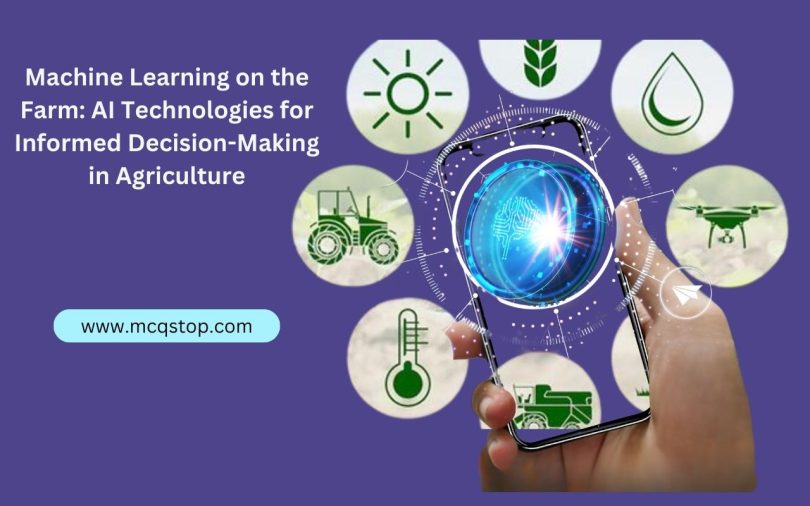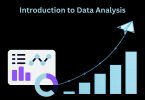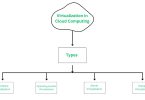Introduction
Agriculture, the backbone of civilization, has evolved over the centuries with advancements in technology. In recent years, the integration of artificial intelligence (AI) and machine learning (ML) into the agricultural sector has opened up new horizons for farmers, enabling them to make smarter, data-driven decisions. This article delves into the realm of “Machine Learning on the Farm” and explores how AI technologies are transforming traditional farming practices into efficient, sustainable, and productive endeavors.
The Data-Driven Farming Revolution
Gone are the days when farmers relied solely on instinct and experience to manage their crops and livestock. With the advent of AI and ML, data has become the cornerstone of modern agriculture. Sensors placed across fields capture data on soil moisture levels, temperature, and nutrient content. Drones equipped with cameras provide aerial views, highlighting areas of concern. Satellites orbiting above offer insights into weather patterns and seasonal changes. This abundance of data serves as the foundation for decision-making powered by AI.
Harnessing AI for Crop Management
One of the most significant applications of AI in agriculture is crop management. By analyzing data collected from sensors and drones, ML algorithms can predict the optimal planting times, irrigation schedules, and fertilizer requirements for specific crops. These algorithms consider various factors, such as historical weather patterns, soil health, and crop genetics. By embracing these data-driven insights, farmers can maximize yields while minimizing resource wastage.
Predictive Analytics for Disease and Pest Management
Diseases and pests pose constant threats to crops and livestock. AI-powered predictive analytics help farmers anticipate disease outbreaks and pest infestations. By analyzing historical data, weather conditions, and pest lifecycles, ML models can generate early warnings. Armed with this information, farmers can take proactive measures, implementing targeted treatments or adopting natural pest control methods. This not only safeguards crop yields but also reduces the need for excessive pesticide use, benefiting both the environment and consumer health.
Optimizing Resource Allocation
Efficient resource allocation is crucial for sustainable farming. AI technologies enable farmers to allocate resources like water, energy, and labor optimally. By analyzing real-time data from sensors and historical usage patterns, AI-driven systems can recommend precise amounts of irrigation water, reducing water wastage. Automated machinery, guided by AI algorithms, can perform tasks with precision, reducing labor costs and minimizing soil compaction. These resource optimization strategies not only enhance productivity but also contribute to environmental conservation.
Enhancing Livestock Management
Machine Learning on the Farm extends beyond crops to livestock management. Sensors attached to animals monitor health metrics such as heart rate, temperature, and feeding habits. AI-powered algorithms analyze this data to detect signs of illness or distress. Real-time alerts enable farmers to provide timely medical attention, ensuring the well-being of their livestock. Additionally, AI can predict optimal breeding times and manage feeding schedules, contributing to better animal welfare and increased productivity.
Promoting Sustainable Practices
Sustainability is a growing concern in agriculture. AI technologies play a pivotal role in promoting eco-friendly practices. ML algorithms analyze data related to water usage, energy consumption, and soil health. By identifying inefficiencies and recommending improvements, AI helps farmers reduce their carbon footprint. Precision agriculture techniques, guided by AI, limit over-fertilization and excessive pesticide use, preserving soil quality and ecosystem health.
Empowering Remote and Small-Scale Farmers
Machine Learning on the Farm isn’t limited to large-scale agribusinesses. It can empower remote and small-scale farmers as well. Mobile apps equipped with AI capabilities provide farmers with insights and recommendations based on localized data. This democratization of information bridges the gap between traditional farming practices and modern technology, enabling farmers worldwide to make informed decisions and improve their livelihoods.
Conclusion
The marriage of AI and agriculture is transforming the way we grow our food. “Machine Learning on the Farm” is ushering in an era of data-driven decision-making, where farmers have the power to optimize every aspect of their operations. By leveraging AI technologies, farmers can predict crop yields, mitigate risks, optimize resource usage, and practice sustainable agriculture. As the world’s population continues to grow, the role of AI in ensuring food security and sustainable practices becomes even more critical. With “Machine Learning on the Farm,” the future of agriculture looks promising, intelligent, and resilient.






Leave a Comment